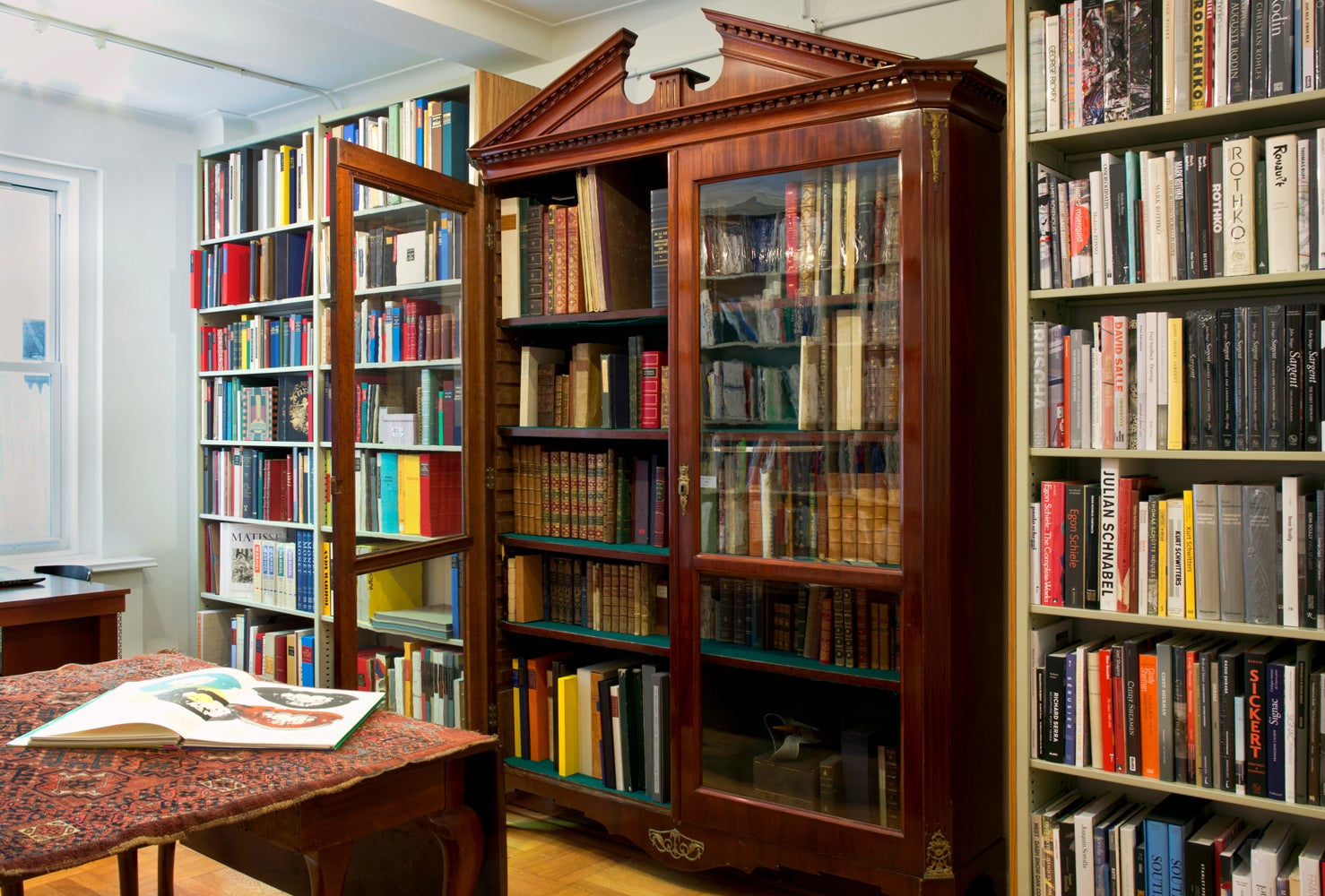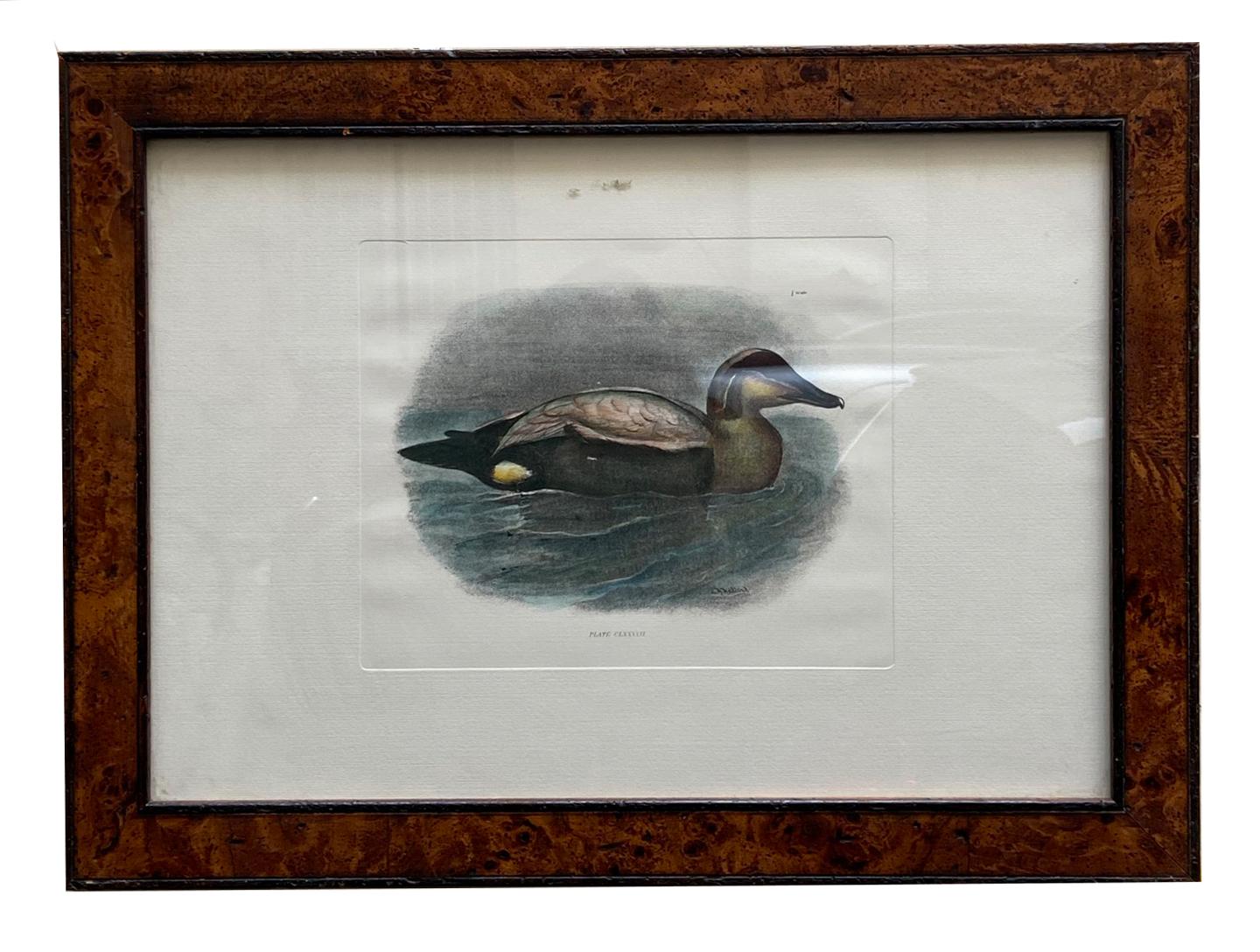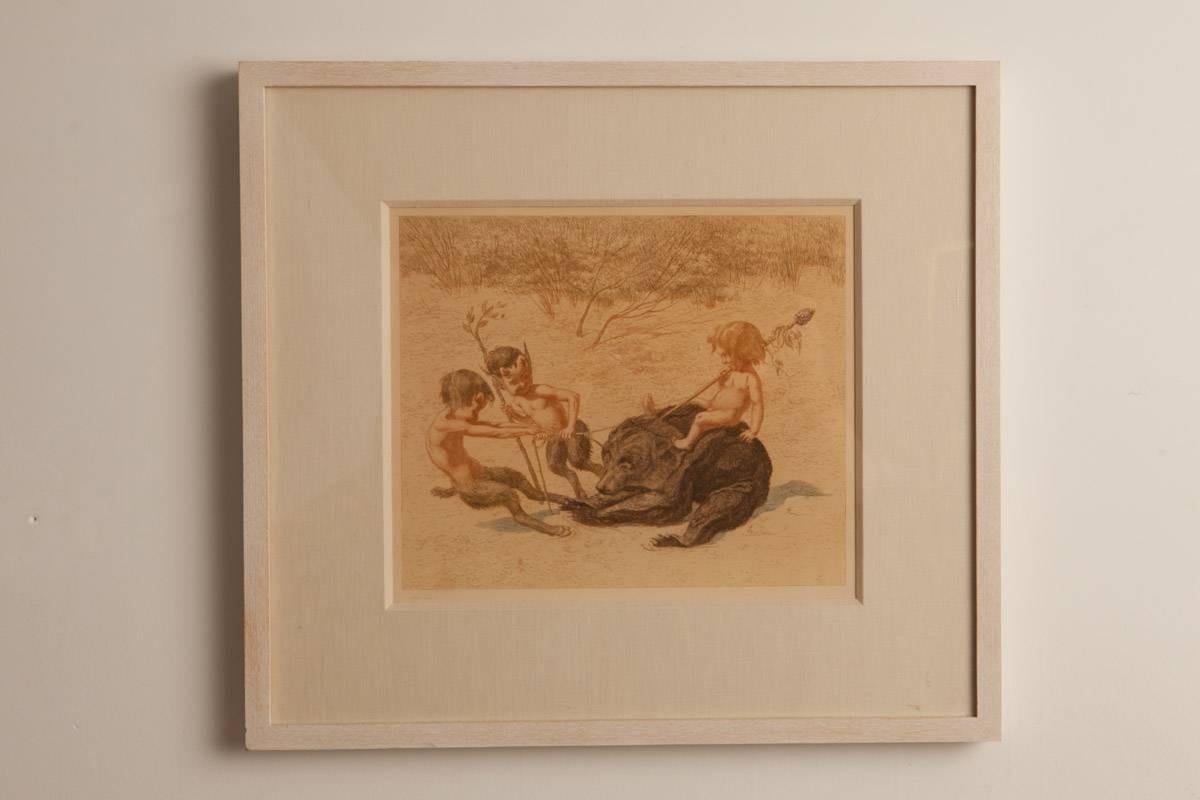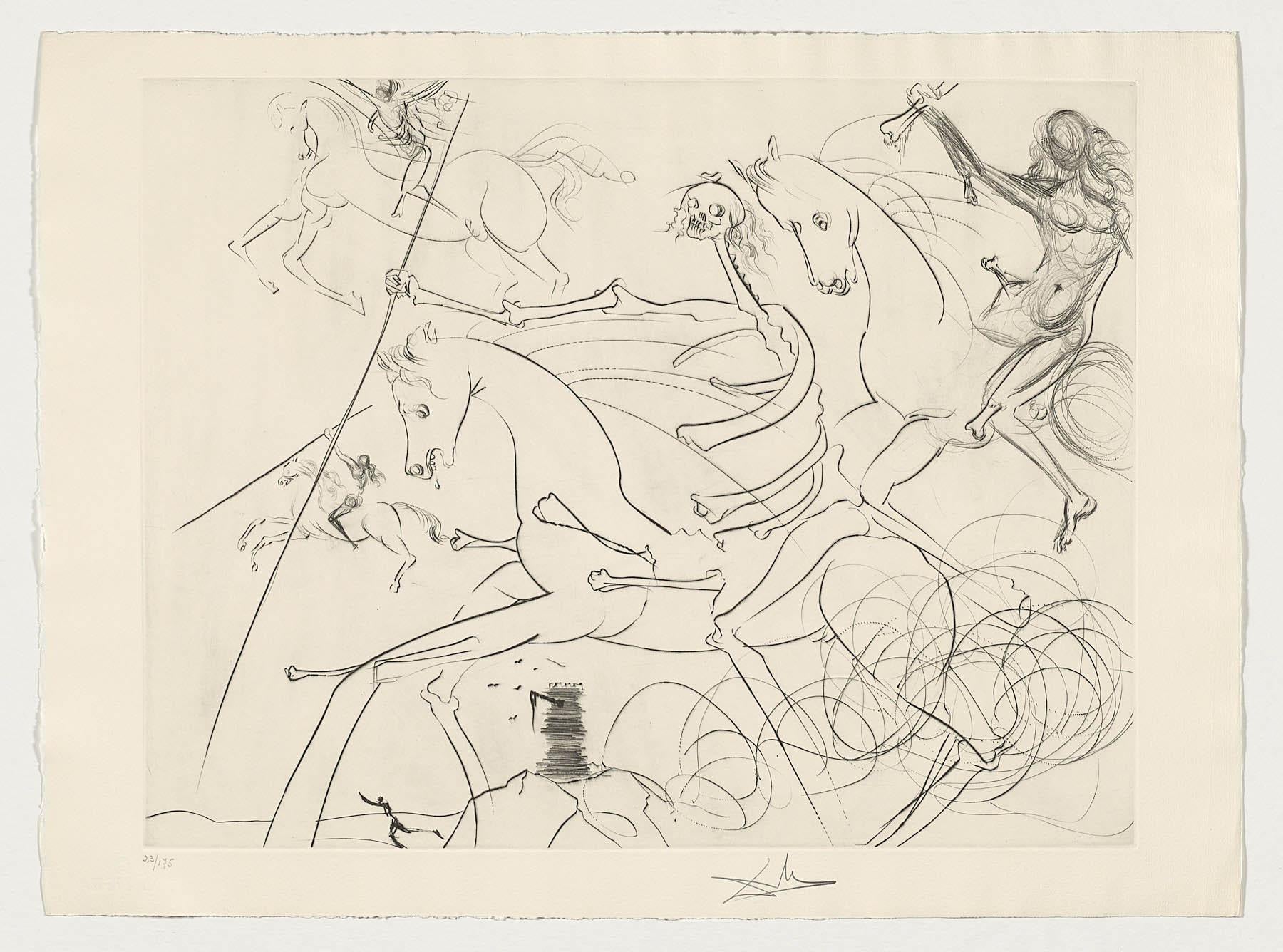Items Similar to Equestrian Scene No. 10: Horse Jumping
Want more images or videos?
Request additional images or videos from the seller
1 of 6
Charles AncelinEquestrian Scene No. 10: Horse Jumping
About the Item
Equestrian Scene No. 10 by Charles Ancelin. Original hand-painted pochoir process print. Paris: Galerie Lutetia, circa 1920.
- Creator:Charles Ancelin (1863 - 1940)
- Dimensions:Height: 14.75 in (37.47 cm)Width: 21.63 in (54.95 cm)
- Medium:
- Period:
- Condition:
- Gallery Location:New York, NY
- Reference Number:

About the Seller
4.9
Recognized Seller
These prestigious sellers are industry leaders and represent the highest echelon for item quality and design.
Gold Seller
These expertly vetted sellers are highly rated and consistently exceed customer expectations.
Established in 1972
1stDibs seller since 2016
178 sales on 1stDibs
Typical response time: 1 hour
Associations
International Fine Print Dealers Association
- ShippingRetrieving quote...Ships From: New York, NY
- Return PolicyA return for this item may be initiated within 14 days of delivery.
More From This SellerView All
- Leopards and Mole EngravingBy Albertus SebaLocated in New York, NYOriginal engraving with later hand-coloring from "Locupletissimi rerum naturalium thesauri accurata descriptio, et iconibus artificiossimis expressio, per universam physices historia...Category
1730s Animal Prints
MaterialsLaid Paper
- Red-Winged Parrakeet EngravingBy William Thomas GreeneLocated in New York, NYColor wood engraving with hand finishing from "Parrots in Captivity" by William Thomas Greene after an original drawing by A.F. Lydon. London: G...Category
1880s Animal Prints
MaterialsPaper
- Pelican with Fish EngravingLocated in New York, NYOriginal hand colored engraving from "Dictionnaire Universel d'Histoire Naturelle." Paris, 1849. Sheet size: 6" w x 6" h. Displayed in a custom, archival gray mat.Category
1840s Animal Prints
MaterialsPaper
- Brown Pelican.By John James AudubonLocated in New York, NYOriginal stone lithograph with hand-coloring from "Birds of North America." First Octavo Edition, by John James Audubon. Plate 423 Philadelphia, J.T. Bowen, ca. 1839-44.Category
1870s Animal Prints
MaterialsPaper
- Brown Pelican.By John James AudubonLocated in New York, NYOriginal stone lithograph with hand-coloring from "Birds of North America." First Octavo Edition, by John James Audubon. Plate 423 Philadelphia, J.T. Bowen, ca. 1839-44.Category
1870s Animal Prints
MaterialsPaper
- Equestrian Scene No. 5.By Charles AncelinLocated in New York, NYOriginal pochoir process print. Paris, Galerie Lutetia, circa 1920.Category
1920s Animal Prints
MaterialsPaper
You May Also Like
- Three Fauns with BearBy Louis MoeLocated in New York, NYLouis Moe (20 April 1857 Arendal Norway, - Copenhagen, Denmark 23 October 1945), Three Fauns and a Bear, mezzotint on paper, Inscribed, lower left: OP. 67 Louis Moe was a Norwegian painter, illustrator and writer who settled in Denmark. He is known for his many book illustrations, illustrated classical works, fairytales, children's books and books on mythology, and contributed to children's magazines and weekly magazines. He is represented in the National Gallery in Oslo, and the Danish Museum of Art & Design in Copenhagen and in Rasmus Meyers Samlinger in Bergen, and a Louis Moe Gallery has been established in Vrådal. He was decorated Knight of the Order of the Dannebrog in 1931. We have additional works, from this series, by Louis Moe available. All reframed and work beautifully together. Please inquire: One Bear Juggling Tamborine with Feet (DD1073) Two Satyrs Resting on a Fence, one with Pan Flute (DD1072) Fighting Bear...Category
20th Century Other Art Style Animal Prints
MaterialsMezzotint, Paper
- Ferruginous Duck - Colored lithograph on paper 1950sLocated in Napoli, ITColored silkscreen print on paper with mahogany wood frameCategory
1950s Old Masters Animal Prints
MaterialsLithograph, Paper
- Spanish Artist hand signed limited edition original art print drypoint n16By Salvador DalíLocated in Miami, FLSalvador Dali (Spain, 1904-1989) 'Jinete apocalíptico', 1974 dry point, etching on paper 22.3 x 30.4 in. (56.5 x 77 cm.) Edition of 175 Unframed ID: DAL2001-016 Hand-signed by author ______________________________________________________ Salvador Felipe Jacinto Dalí i Domènech was a Spanish painter, sculptor, engraver, set designer and writer of the 20th century. An artist associated with surrealism, he is one of the most important figures in 20th century art, representing the archetype of the spectacular contemporary multifaceted artist. He develops his creative activity in various fields through the most diverse cultural formulas: painting, written media, performing arts, cinema, or public appearances in the press, radio, cinema, advertising, television, etc. Master of the most refined pictorial technique, especially drawing, along with various aesthetic languages - from impressionism, cubism, purism or late ultraism with Dadaist edges to the most radical surrealism, hyperrealism, pop-art or art optical—, will absorb every influence that is useful to build its own and personal language, halfway between technical tradition and thematic avant-garde. His paranoid-critical method is his main contribution to the surrealist movement and to the history of art as a new creative model with which Dalí's theories acquire theoretical entity - thanks to the successive interpretations that the Empordà artist made of his readings of Dalí's work. Sigmund Freud—and practice, applying it as a revealing liquid of images that can be represented plastically through multiple images, anamorphisms, relational mirages, irrational and heterogeneous symbolic images, pseudohallucinations, childhood memories, atavisms, obsessive ideas, etc., and recreating a polyphonic method capable of critically relating any visual or sensitive experience. With his method, Dalí makes paranoid delirium a whole mode of expression of an art that introduces us to the concrete irrationality that inhabits every creative process, constructing not only his works, but also his own character. as an artist. In Dalí, the relationship between his work and his personal history becomes evident. Much of the most significant biographical facts for the artist are implicitly or explicitly present in the content of his work and are the explanation of his complex and contradictory personality. In 1910, at the age of 6, he was enrolled by his father in the Hispano-French school of the Immaculate Conception of Figueres, where he learned French, his future language of culture. Dalí's first contact with Impressionism occurred in 1916, when he spent some time on the outskirts of Figueres, specifically at the Molí de la Torre estate, property of the Pichot family (intellectuals and artists), where he was the collection of the painter Ramón Pichot. In 1919 he participated for the first time in a group exhibition in the halls of the Societat de Concerts, and with a group of friends from the institute founded the magazine Studium, in which he published his first writings. A year later he moved to Madrid to study at the School of Fine Arts. In 1922 he won his first prize at the Concurs-exposició d'obres d'art originals d'students, held at the Galeries Dalmau (Barcelona). This same year he attended the School of Painting, Sculpture and Engraving in Madrid (Royal Academy of Fine Arts of San Fernando), and lived in the Student Residence, where he became friends with prominent personalities such as Luis Buñuel, Federico García Lorca, Pedro Garfias , Eugenio Montes, or Pepín Bello. However, a year later he was expelled from the Academy for his rebellious and revolutionary character, accused of leading a protest. It would be in 1927 when his surrealist period began, after having traveled to the Netherlands and France, meeting Flemish painters and Picasso. In Paris itself, in 1929, through Joan Miró, he came into contact with a group of surrealists headed...Category
1970s Surrealist Prints and Multiples
MaterialsPaper, Drypoint, Etching
- Duck - Colored lithograph on paper 1950sLocated in Napoli, ITColored silkscreen print on paper with mahogany wood frameCategory
1950s Old Masters Animal Prints
MaterialsLithograph, Paper
- The Rat - Lithograph by Paul Gervais - 1854By Paul GervaisLocated in Roma, ITThe Rat is an original lithograph on ivory-colored paper, realized by Paul Gervais (1816-1879). The artwork is from The Series of "Les Trois Règnes de la Nature", and was published i...Category
1850s Modern Animal Prints
MaterialsPaper, Lithograph
- David Shrigley - No One Is Happier Than Me, 2022By David ShrigleyLocated in Central, HKDavid Shrigley No One Is Happier Than Me, 2022 11 Colour Screenprint on Somerset Tub Sized 410gsm Paper Edition of 125 Print Size: 76cm x 56cmCategory
2010s Animal Prints
MaterialsPaper
Recently Viewed
View AllMore Ways To Browse
Antique 10
Antique Equestrian Equestrian
Antique Equestrian
Equestrian Original
Pochoir Antique
Horse Jumping Horse
Horse Jumping
Antique Equestrian Prints
Antique Horse Jumping
Horse Jumping Prints
Gould Hummingbird
John Gould Hummingbirds
John Partridge
Pussy Art
South African Safari
Gould Richter Hummingbirds
Humming Birds By John Gould
John Gould Toucans





